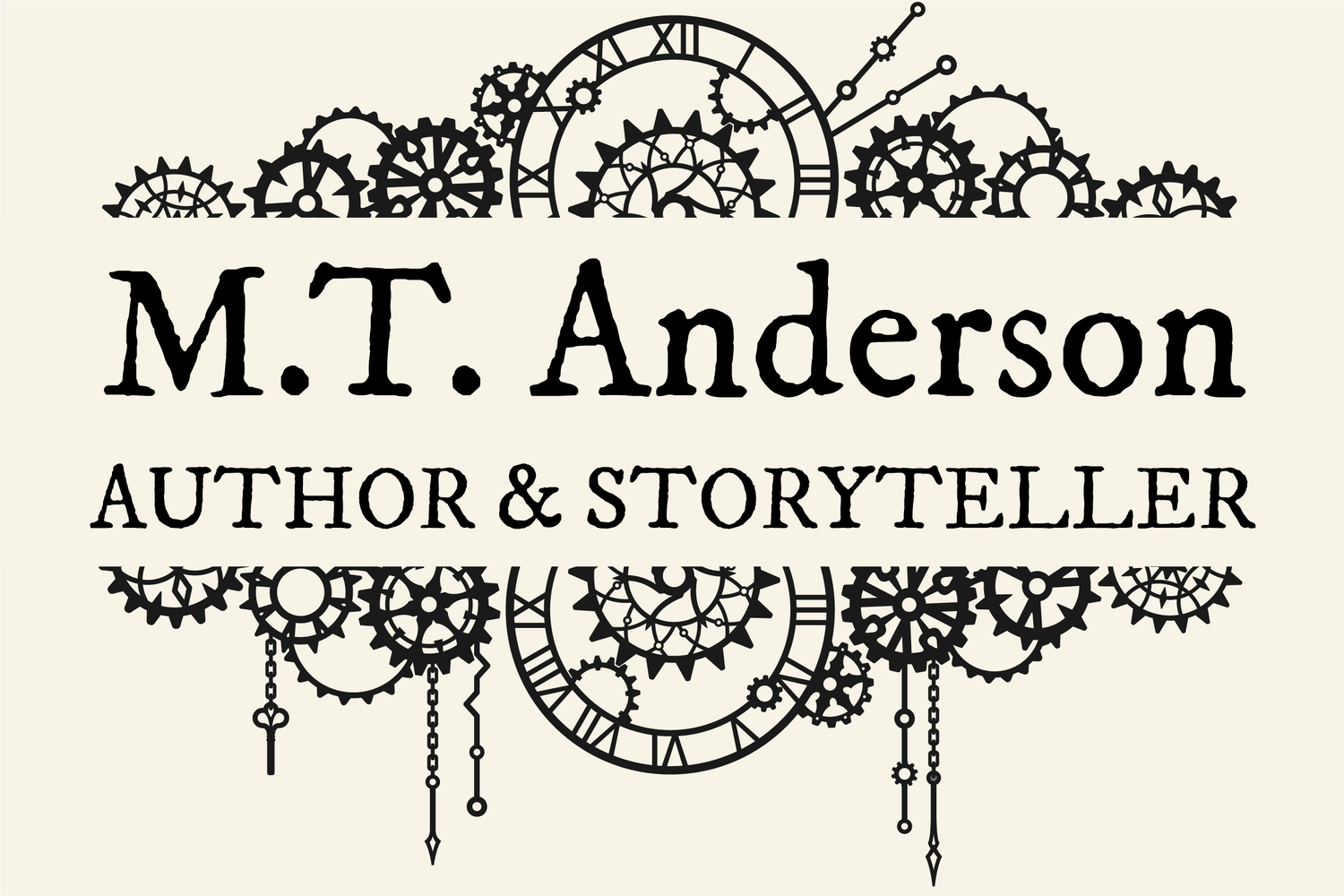Feed
When I was a teenager, I was irritated at the way companies tried to sell me things. I think this is true of a lot of teens. All around us, ads and tv shows and movies are showing us images of the high life, playing on our desire to belong. There’s always that subliminal message seducing us and bullying us: If you just get this, and buy this, and order that, you’ll be cool, and you’ll be loved. See how much fun these kids are having? If you want to be wanted, then you need to want what other people want. And other people – what they want is this. Buy it. Buy it now.
This has become even more intense (and not just for teens!) now that most of us are connected all the time through devices of one kind or another. I don’t even notice the ads that flit past me any more, I take them so much for granted. And even though I know that my favorite shows are paid for product placement, I take that for granted, too.
Of course, I wrote Feed back in 2001, before most of these devices existed, and before marketing systems had become as sophisticated as they are now. But even then, before the smartphone, I was still tapped into a wider system of corporate communication. Already my dreams of who I wanted to be, my understanding of who I had been in the past, my hopes for who I’d become in the future – these things had already been influenced and perhaps even constructed by advertising images, movie stills, and prime-time TV, the hours of images of twenty-somethings crammed into bars, girls smiling at men who drank the right beer, leaving me with a dim impression that I was supposed to like a certain kind of music, a certain kind of shirt, a certain kind of ribs.
So I began to conceive of a story in which these media connections and social networking connections weren’t external, but within us all. What if we no longer needed devices? What if we had an internet feed within us, so we were never disconnected?
It is out of the memory of my anger as a teen at the bullying maneuvers of “youth marketing” that I wrote the book – but also out of the knowledge that even now, I’m part of this system of desire. I still can’t get out of my head the images of who I’m supposed to be. (For my current age: the picket fence; the lawn; holding some daughter up toward the sun; strapping my tykes into the SUV.)
I don’t think this would have been an interesting book to write (or to read) if I had only hated the hyper-marketed world I describe. For me, the key to the discomfort is how much I love some of it, how much I still do want to be slick like the people on the tube, beautiful, laughing, surrounded by friends. And how much I legitimately do think that the technology-based information resources at our command now are incredible (things like Project Gutenberg, the Internet Archive, instant music and movie downloads, even the much-maligned Wikipedia). These are tools for an amazing new intellectual understanding of the world, though they come with strings attached. Think about the way technological progress over the last twenty years has revolutionized the artistic possibilities in film, or the scientific processes of medical experimentation – or almost any field. We have at our fingertips knowledge and power like no other generation before us, and that’s intoxicating. I am no Luddite. And this would not have been an effective satire, in my opinion, if I hadn’t also been seduced by what I was mocking. It is the anguish of indecision that animates it. This is indeed a brave new world, but there is a cost.
People have told me that Feed is coming true. (Some of the technologies I discussed have been explored in recent years.) But in a sense, I believe it already was the reality when I was writing.
I was already dreaming in advertisements.
NOTES FOR WRITERS:
This was a book I just started writing without knowing where it was going. I wandered into it. Originally, it was supposed to be a short story for a collection on literacy. Obviously, it got way too long, and I presented it to my editor at Candlewick, Liz Bicknell, as a book instead.
Writing without a design for the novel was complicated. It took me one complete draft before I even knew where the story was. I wandered around in loops trying to find the plot. Then I had to go back and cut out a lot of pieces to make it feel forceful and directed. If I remember correctly, I cut about fifty pages or so to make it the book it is now.
Don’t worry. You won’t miss any of those pages.
Writers often hate revision. To me, revision is difficult, but it can feel great. Like cutting off some huge, cheesy growth on your face or your foot – and suddenly you can breathe more freely and move more easily.
Don’t fear the knife.
